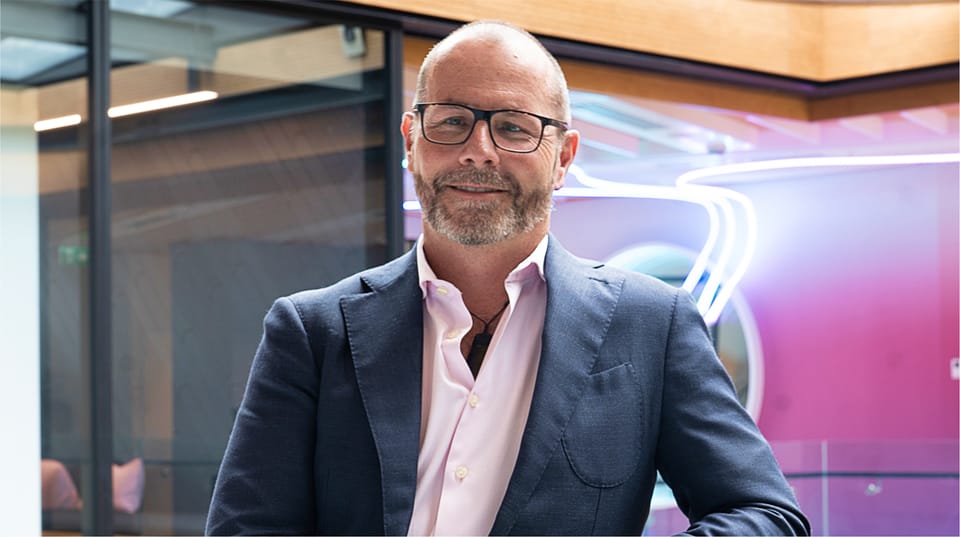Chorus back in profit as fibre grows - One NZ wins DOC deal

In this newsletter:
- Chorus result
- Device location enabled to help callers in emergencies
- Department of Conservation to extend reach with One NZ satellite mobile
Fibre uptake continues to rise as company embraces simpler future
Chorus has returned to profit. The company made a net profit of $4 million in 2025. This compares with a $9 million loss last year. Operating revenue edged up to $1.014 billion and EBITDA rose to $705 million. This represents a turnaround from Chorus' flat first half result announced in February.
Revenue was essentially flat, inching up from $1,010 million to $1,014 million. This was despite a drop in revenues as the number of copper connections fell during the year. Chorus says it offset this decline thanks to a growth in fibre connections and a higher average revenue for each user.
Costs were also flat. The company’s simplification strategy and cost management held operating expenditure at $309 million. This is $1 million lower than the previous year.
Price challenges
Chorus says it managed to hold costs down despite inflation affecting many expenses, higher regulatory levies and one-off costs for operating model changes and investigating new revenue opportunities.
Fibre continues to dominate Chorus’s business. It now accounts for 92 percent of fixed lines. Connections increased 31,000 during the year to 1.115 million while uptake climbed one percent to 72.1 percent of connected addresses.
Customers’ unceasing appetite for data continued to grow. The average monthly use per fibre connection was up 7.7 percent at 671GB. Data surges were particularly pronounced during winter 2025, when gaming updates like Fortnite pushed the network to a record 30 petabytes in a single day. This follows a surge in data demand on the Chorus network in 2024.
Chorus shareholders will receive an unimputed final dividend of 34.5 cents per share. This takes the total FY25 dividends to 57.5 cents. That’s up 21 percent on the previous year.
Simpler, fibre-only business
Chief executive Mark Aue says Chorus is reshaping itself into a simpler, fibre-only digital infrastructure company, with a target of 80 percent uptake by 2030.
He says he expects the economy to remain challenging and the structural changes will help maintain connection growth.
Chorus continues to expand the fibre footprint. It added 9,000 homes and businesses to the network during the year.
The Commerce Commission’s recent recommendation to remove copper access regulation marks a milestone on the pathway to retiring the legacy network outside fibre areas.
Fibre has come to dominate Chorus's business, a transformation that began during a difficult period in 2017 when copper pricing disputes and fixed wireless competition threatened the company's financial stability
Now emergency services can find you faster

Next Generation Critical Communications (NGCC) has developed a service called Device Location Information (DLI) that can help rescuers find you quickly if you’re in danger.
DLI locates the mobile phone of someone who hasn’t called 111 themselves, but others may have serious concerns about their health or safety.
About 20 percent of 111 calls are by people who fear someone else is missing or in danger.
Launched last Friday by Police Minister Mark Mitchell and Associate Health Minister Casey Costello, DLI is an extension of NGCC’s Emergency Caller Location Information (ECLI) service. It gives emergency services the location of a mobile device when it’s used to make a 111 call.
Difference between life and death
Peter Bradley, chief executive of Hato Hone St John, says DLI can mean the difference between life and death for someone whose life or health is at serious risk but can’t call for help.
However, there’s a privacy issue with DLI, so responders have a two-step process to authorise its use and report on when and why it’s used. This includes making a follow-up call to the phone to check if it’s safe to be located this way.
DLI wouldn’t work without the co-operation of the telecommunications industry. Paul Brislen, CEO of the Telecommunications Forum, says his organisation supports the service.
He says emergency services can use DLI to immediately access the information they need to send help if a caller has a mobile phone connected to a cellular network.
NGCC is best known for delivering the Public Safety Network’s cellular services, which are used by around 25,000 frontline responders in NZ Police, Fire and Emergency NZ, Wellington Free Ambulance, and Hato Hone St John.
Department of Conservation uses One NZ satellite direct-to-cell

One NZ has won Department of Conservation business from Spark. The deal means DOC staff can now use One’s satellite-powered services in the field and replace multiple devices with a single mobile phone.
A partnership agreement between DOC and One will see the pair test a range of emerging technologies. Top of the list are satellite and IoT pilots to keep staff safe, collect data, and help with decision-making in conservation areas.
The telco’s Starlink-powered satellite network gives DOC workers direct-to-cell capabilities in remote areas.
One NZ CEO Jason Paris says: “By improving how DOC rangers and staff communicate, we’re helping protect the people, places and species that make Aotearoa so special.
An example of where the technology can help is in Haast, where DOC Ranger Heath Sinclair works across challenging terrain to track and protect. This allows him to keep in touch with base, receive weather updates, and request help if needed.
In other news...
- Innovative fibre projects for low-income users – The Listener (paywall).
- Rakon investors are not happy with challenges — Businessdesk.
- Regulating big tech may come at a high price — The Register.
- Ghost-tapping phone payment fraud makes it to New Zealand - Interest.
Internal affairs looking for child exploitation blocking tools
The Department of Internal Affairs plans to replace the system it uses for blocking child exploitation websites. This has made it harder for predators to access material. The department has issued a tender document saying the existing system is now approaching the end of its life.
Apple iPhone 17 announcement expected September 9
Journalists received invitations this week to an event on September 9, which is widely expected to be the iPhone 17 launch. Media stories anticipate an iPhone Air model, which is expected to be thinner and lighter than existing iPhone models.
Galaxy Tab S10 Lite
With prices starting at $700, Samsung’s Galaxy Tab S10 Lite is aimed at students and others on a tight budget. It has a 10.9-inch screen and comes with an S Pen stylus, which can be used for handwritten notes. Samsung bundles a variety of apps, including GoodNotes, Clip Studio Paint, LumaFusion and Notion.
Five years ago: Covid failed to derail telcos
Chorus and Spark managed solid results during the pandemic, that was despite border controls wiping out the high-margin roaming revenues. Also in the news five years ago, the UFB project hit a million connections.
One year ago: ComCom passes on fibre deregulation
Telecommunications Commissioner, Tristan Gilbertson, decided it was too early to deregulate fibre saying 4G fixed wireless broadband is not competitive enough. At the time, 5G FWB was only starting, and Starlink was not considered a challenger.
Interesting? Useful? - Feel free to pass this email on to your colleagues.
Have your say. Subscribers, it's free, and we don’t collect any data, can comment on any newsletter or story on the website. Just scroll to the bottom of the page. Reader emails are also welcome.
Member discussion